
© Ennis Physiotherapy Clinic, 3A Barrack Close, Barrack Street, Ennis, Co. Clare V95 X437 Tel: (065) 6840757
Spinal Problems Neck + Back Pain Disc Injury Whiplash Posture
Lower Limb Injuries Walking + Running Ligament Injury Snowsports Injury Home Exs Prog
Upper Limb Injuries Ligament Sprains Tendon+Muscle Golf + Bike Set Up Useful Links

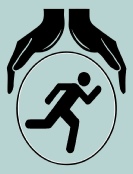


065 6840757

Mon - Fri 9.30am - 8.30pm


3a Barrack Close, Barrack St., Ennis, Co. Clare V95 X437
Work posture may be either static or dynamic. It is worth remembering that there is often a mixture of both of these occurring simultaneously as one part of the body does the work while other areas hold the rest of the body in the correct position.
In the best circumstances both the desk and the chair used are adjustable in height. Where this is the case the chair adjustments are made first and then the desk adjusted to the appropriate height for the seated worker. The more common situation is where the desk height is fixed and ergonomic principles are applied to the workstation in order to make it as safe and effective as possible.
Posture at Standing Workstations
When work is done in a standing posture it is important that the spine is maintained in a straight alignment wherever possible. Where bending is required it should be kept to a minimum required to complete a task and preferably should not be held for prolonged periods of time.
Key factors to be considered will include what the hands need to do, where the feet need to be placed,, what surface is being stood on and how stable it is, the head position and eye level / sight lines. The task itself will also determine the correct height at which the workstation is set as precision work requires greater support for the upper limbs while heavy work needs the body weight to be brought to bear during the execution of the task. The following give some indication of what is needed.
The use of laptops and other mobile digital devices (phones and tablets) may present a risk to health, and as such must be minimised / avoided if possible. Many of the same principles apply to the use of portable devices as do to using a desktop computer.
While portable digital devices, such as smartphones or IPad, are increasingly in regular use and often over prolonged periods of time.
Safe Usage Guidelines
All portable computers, smartphones and iPads are designed to be used in a wide variety of situations and environments. Due to their portability, there are a number of things you can do to use them safely and effectively.
There are no universally agreed defined ‘safe’ time limits for using portable computer devices. Where extended use is undertaken, a suitable desk and chair setup should be provided.
- Sustained usage may be continuous use for periods of 30-60 minutes; and
- Extended usage may be continuous use periods of >1 hour
- Suitable head, neck and spine postures during use is a key element in preventing injury. It is important to maintain good posture, with a particular focus on the alignment pf the
- Back,
- Head, Neck + Shoulders,
- Arms + Forearms and
- Wrists + Hands
- Use a comfortable position / posture. Awkward Postures should be avoided. Sustained or Extended use while adopting an awkward postures is highly risky and is not recommended. An awkward posture may include
- Sitting on the floor,
- Sitting cross legged;
- Standing leaning sideways or forwards onto a support (wall / bench)
- Side lying on a floor
- Slouching (back or forwards) whilst seated;
- Resting device on an hand / arm for prolonged periods.
- It is generally recommended that rest breaks are taken for at least 5 minutes for every 30 minutes of continuous use
- Regular breaks should be combined with some physical stretches and / or exercises.
- Eye exercises and visual rest will assist in preventing eye strain (e.g. look at an alternative object several metres away for up to 20 seconds).
- Maintain a comfortable viewing distance from the screen – approximately 45-70cm.
- Tilt the screen so that it is at a right angle (900) to the user’s line of sight. Normal line of sight, when the head is upright, is 100 – 150 below the horizontal but can go down as far as 300. The device screen should ideally be held at 1050-1000 to the horizontal but no flatter than 1200 to the horizontal
- Position device so that reflections and glare do not cause a visual disturbance.
Examples of poor posture while using a portable device
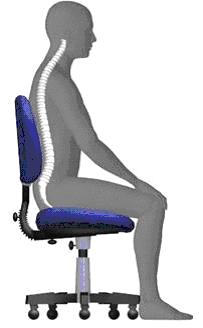
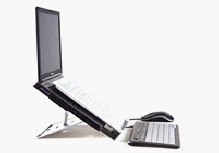





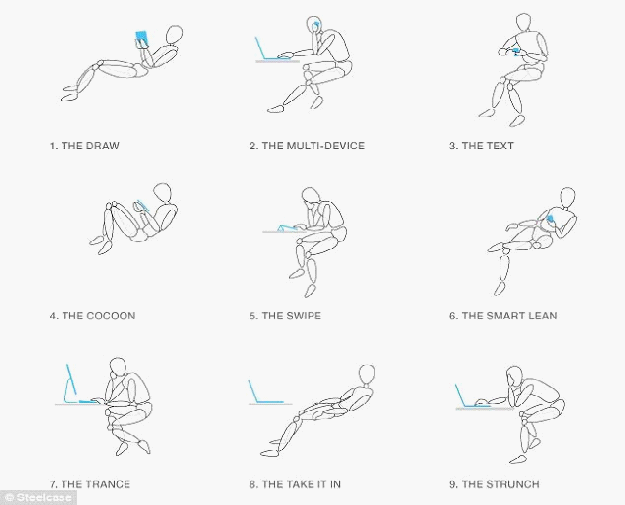
Postural strain is a common cause of spinal discomfort for many people. ‘Normal’ posture is developed during childhood and young children generally have good postural habits. A number of factors affect posture - the need to keep the eyes level and facing forward and relative muscle balance around the pelvis and shoulder girdle areas.
When viewed from the side the ideal posture (with the head and the pelvis level with neutral tilted positions) should allow the ears to be directly overhead the shoulder and hip and a straight line drawn between these three points should pass through the knee and reach the ground just in front of the ankles.
When viewed from the back or front the body should be largely symmetrical but not necessarily perfectly so. The spine viewed from the back is normally straight but will vary slightly over time with activity and dynamic use. The arms should hang equally and freely on either side
The curves of the spine should not be excessive but may become so with poor habits. Poor posture represents a significant risk factor for spinal pain. A number of types of posture are described which have clearly distinguishing features.
Sitting posture is determined by the relative position of the pelvis, specifically the degree to which it is tilted back or forwards. The front edges of the pubic and ilium bones (the ASIS) should be aligned vertically when the pelvis is in neutral tilt, which is considered the best position for for good posture (See below).
There are a number of factors which determine this position including seat height, seat depth, seat angle muscle tightness and weakness etc. At the other end of the spine the head position, eye level, and the objects being looked at all impact on the seated posture. If the pelvis rolls backwards into posterior tilt then the lumber spine must become flexed. This is a stressful position for the tissues, especially the discs and should be avoided for very prolonged periods.

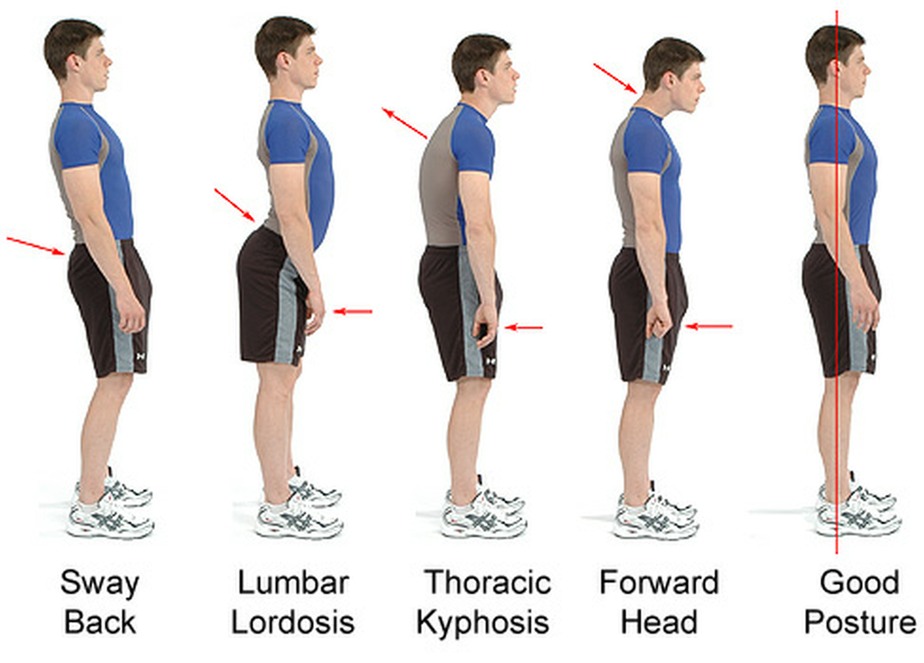
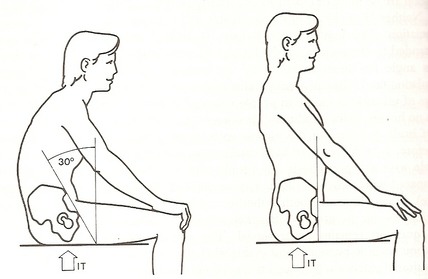
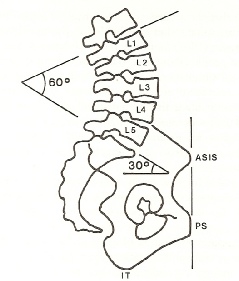
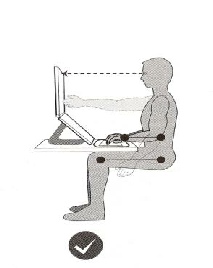
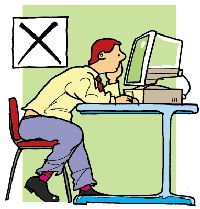

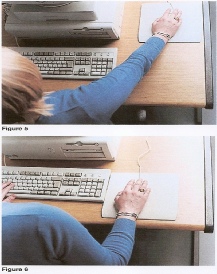
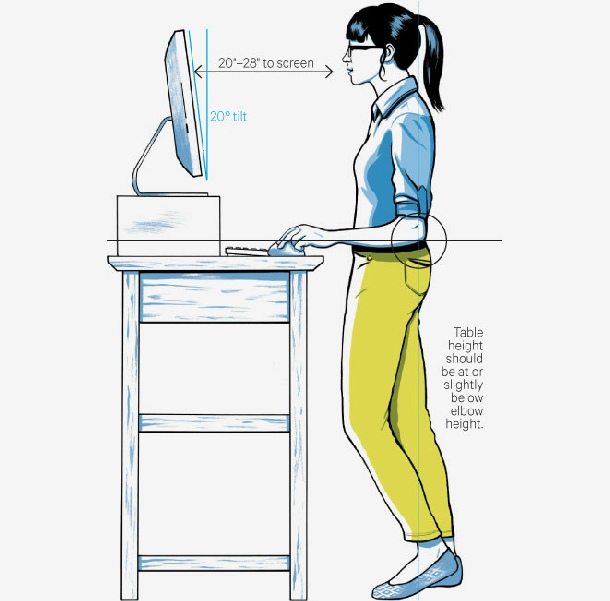

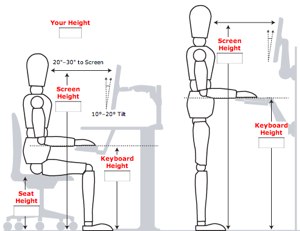
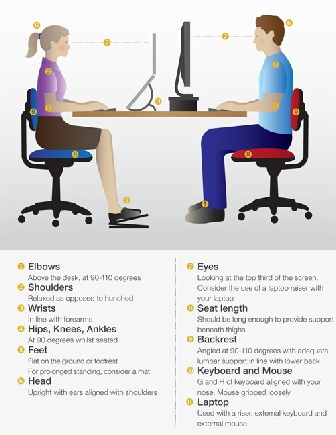
The minimum requirements to maintain good posture are
- Feet flat on floor or supported on a footrest IF the height of the seat means the feet are hanging loose off the floor
- The knees and hips are flexed at approximately right angles - this means the seat height is at or just above the level of the knees when standing.
- The legs should not be crossed
- The arms should be handing relaxed at the sides.
- The forearms are just above the level of the desk top, are horizontal with the elbows bent at right angles.
- The wrists are in neutral - neither excessively flexed nor extended and not bent sideways. Wide shouldered or bodied people or where the arms are held away from the side may require a split keyboard to maintain a straight on alignment for the hands.
- The back should be straight and supported by the backrest. The lumber support of the chair needs to be positioned in the hollow of the lower back and may need the backrest to be adjusted up or down. Avoid slouching down to see better
- A slight forward tilt on the seat pan may help encourage upright posture
- The shoulders should be overhead the hips
- The arm should not be excessively stretched out for the mouse, especially not with the elbow locked straight. The mouse should be positioned alongside the keyboard
- The head should not be forward (protruding chin)
- The screen should be positioned with the top edge at eye level and approximately at arms length from the body
Watch out out for the following poor posture